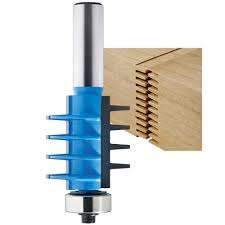INDISOL EQUIPMENT SUPPLY
LINEAR GUIDE LUBRICATION
ITEM CODE: 205715
Technical Background
Linear guides can be found in many production operations and applications steadying and guiding the application for successful execution of repetitive tasks. They vary significantly in design and size and are dependent on the operation. Often these are applications that due to machine design find themselves forgotten because they are stuck away behind the Operator side or operational zone of machines. The SINGLE worst lubrication maintenance strategy is to not lubricate linear guides.

The challenge facing operators of linear guides is whether to use an oil or semi solid lubricant like grease or alternatively a solid as a dry lubricant. It is often advised that grease be used as a lubricant for the lubrication of linear guides. However, there are occasions when this might not be suitable or even possible and then one would explore the use of oils or dry lubricant. In principle linear guides should be lubricated before going into operation and on a regular basis thereafter.
Fundamental Principles of lubrication linear guides:
- Linear guides and linear guide bearings should be cleaned thoroughly before being put into operation or assembled.
- If an existing linear guide; that has not enjoyed regular lubrication, is being repaired for ongoing application then it would be advised, that linear bearing be removed and cleaned thoroughly before assembled.
- The linear guide and bearing should be lubricated before being assembled and or going into operation.
- The choice of lubricant would vary based on the fundamentals of lubrication.
- Ideally one would select a grease for this type of application
- Base oil still plays a major role, so its selection is paramount.
- High speed lightly loaded applications would prefer an ISO VG of 32 to 68.
- Slower more heavily loaded applications require an ISO VG 100 to 220 and sometimes even more viscous oil would apply.
- Typically, Lithium grease soaps have been used traditionally but Lithium Complex and Calcium Sulfonate thickeners would also be appropriate and deliver superior results.
- The inclusion of a solid lubricant would assist in reducing the co-efficient of friction and remaining in place when oil is depleted if the application is not re-lubricated regularly.
- Ideally one would select a NLGI 2 or 3 grease thickener in consistency. If you select a thickener like Calcium Sulphonate then stay with NLGI 2 or even go down to a NLGI 1.
- Aerosol lubricants are generally not preferred as they do not get to the linear guide itself but serve only to lubricate the shaft or guide way.
- If the linear guide contains bronze components, then selection of the grease is important to ensure it will not harm the yellow metal.
- As linear guides attract dust and dirt when in operation; especially in applications like Saw Mills, Cement works, Engineering Machine shops, Printing Industry, Agriculture and many other industrial applications; it is critical that the linear guide be cleaned periodically or even on a daily basis dependant on the amount of dirt collected on the linear guide and then be lubricated.
- To protect plain bush guides and rolling element guide bearings it is important to ensure that adequate sealing arrangements are in place to protect the bearings or bushes and avoid dirt ingress.
- The shaft of the linear guide should also be lubricated with a thin film of lubricant to prevent corrosion of the shaft after cleaning.
- As this thin film of lubricant will not be enough to address the needs of the linear guide this should be lubricated by way of a grease nipple to displace lubricant directly into the linear guide bushes or bearings.
- If the lubricant looks dirty, then it is dirty and should be cleaned off and linear guide regreased. Dirty lubricant result in wear.
- Aerosol based solvent type lubricants do not suffice as a lubricant for linear guides.


